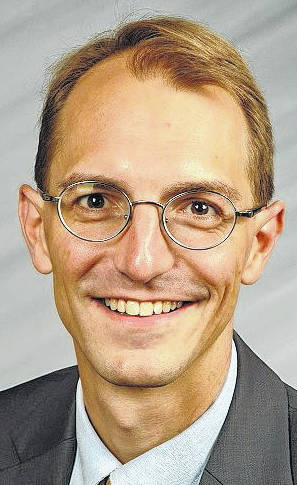
“It came to me that the youth must be trained to work. They should know honest toil is an expression of noble manhood and the task cannot disgrace.”
— Elmer Curry
“Universal suffrage should rest upon universal education. To this end, liberal and permanent provision should be made for the support of free schools by the State governments, and, if need be, supplemented by legitimate aid from national authority.”
— Rutherford Hayes
Delaware celebrated two of its native sons in this past week, in a way that it has never before been able to do so. In two separate celebrations, it erected permanent markers of honor to two 19th century citizens who left their mark on their city, state, and nation in very different, but very important ways. Both men had connections to education, the law, and the betterment of Delaware.
On Oct. 4, during First Friday celebrations, the citizenry gathered to mark the culmination of years of work by Bill Rietz’s Rutherford B. Hayes Comes Home committee. Delaware is one of only 43 cities in the United States that can claim to be the birthplace of a U.S. president, and previously, the city had no substantial memorial to the honor.
That changed on Friday when Mayor Riggle, Commissioner Merrell, the Paraguayan ambassador to the U.S., and many hundreds of Delaware residents gathered to watch Hayes’ great-great granddaughter and several Rutherford B. Hayes High School students unveil a statue of Hayes at the intersection of Sandusky and William streets.
Hayes attended public school in Delaware, the Methodist seminary in Norwalk, and Kenyon College, before acquiring his law degree at Harvard and practicing law in Fremont and Cincinnati. His accomplishments are well known to Delaware residents, but it should be noted that it was during his time as governor of Ohio that he supported the prison reform movement (and funding for it) that led to the building of our historic old jail and sheriff’s residence on Central Avenue.
Elmer Curry’s name might not be as familiar to Delaware residents, but it should be — and with it permanently affixed on street signs at the intersections of Sandusky and London, and Liberty and London, it will certainly become more familiar rather quickly.
Curry was born in Delaware in 1871. When he was 17 years old, and still attending public schools in Delaware, he founded his own school, which he called “The Place of Knowledge for Old and Young,” and which we now call the Curry School. There, he dedicated himself to providing academic and vocational education to Delaware’s African-American residents.
His duties at the school did not distract him from continuing his own education once he had graduated from the public schools in Delaware. He taught in Van Wert, attended Ohio Wesleyan, and apprenticed in the law with the local firm of Marriott and Wickham, all while still running his school in the evenings.
Earlier this year, Benny Shoults, curator of the Delaware County Historical Society’s Meeker Homestead Museum, completed a truly outstanding exhibit on Curry, and co-presented a program about him with Barbara Terzian, associate professor of history at OWU. On Wednesday of this week, a large crowd gathered under clear skies to watch as the city placed honorary street signs naming a portion of London Road “E.W.B. Curry Way.”
These men dedicated their lives to work that they believed would improve the lives of their fellow citizens. They sought to use education as means to lift men and women up into healthy and successful lives. They left their mark on Delaware, and now, through recognition of them, the city has placed permanent markers to honor their legacy.


